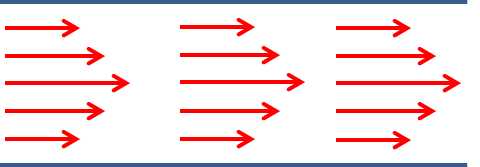Once you have diagnosed your ideal flow pattern for your process, the next step is to determine what flow regime will complement it. Laminar flow occurs when fluid flow has no cross currents and maintains a streamlined, parallel movement between its layers (figure 1). The motion of the particles in a laminar flowing liquid is very methodical, making this type of flow regime appropriate for crystallization and other processes that involve delicate particles. Conversely, a turbulent flow regime (figure 2) is characterized by sudden property changes which cause disorder to the particles. This can be caused by a variety of changes such as a rapid fluctuation of pressure and velocity. An agitator that promotes dispersion and heat transfer use turbulent flow.
Figure 3. Laminar Flow

Figure 4. Turbulent Flow

